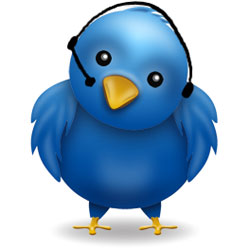 With the advent of social media, customer service has changed significantly for all businesses. Reputation management has become more difficult and easier at the same time. Because of the accessibility of the Internet, individuals are able to share a message with an enormous number of people with relative ease. People are able to do this without certification, merit, or even moderation. This is a large concern to anyone with a brand or identity to protect.
With the advent of social media, customer service has changed significantly for all businesses. Reputation management has become more difficult and easier at the same time. Because of the accessibility of the Internet, individuals are able to share a message with an enormous number of people with relative ease. People are able to do this without certification, merit, or even moderation. This is a large concern to anyone with a brand or identity to protect.
However, these same tools that allow the large-mouthed few to cause enormous damage also enable businesses to gain greater insight into the trivial small things that may take them from good to great. This is the balance of customer service and reputation management. Thankfully there are some great tools to help manage this while not losing sight of opportunities to do better. Two of these, Twitter and Google News Alerts, can do just that.
Google Alerts is a service that sends alerts when the Google bot discovers a page with your assigned keywords on it. Just fill out a web form with desired search terms, and the alert will instantly be put into action. The results can be filtered by data, news, blogs, real-time, video, or discussions.
A business can keep an eye on online conversations in the areas they care most about. Users can sign up weekly, daily, or real-time alerts. Of course, a business should set up alerts for their own business or product name, but it can also be useful to watch industry trends and competitor activity.
For example, if someone were to own Acme Co. and their primary product was selling t-shirts with music speakers in them they may want to set up a Google News Alert to notify them of any blog posts or tweets that are complaining about the t-shirts. It is a great tool to help maintain a positive, proactive approach to combating potential issues.
Twitter also has the capability to be searched, filtered, and monitored through the use of third-party tools. Utilizing such tools with Twitter allows one to find out what is being said about their product, their competition, their brand, and more. For a great example, see how Comcast uses Twitter for their customer service (Use Customer Service to Market Your Business).
These are extremely valuable tools to a customer service-focused organization that wants to reach out and help people experiencing difficulties. Many individuals also use Twitter to reach out for help, knowing that they have a public audience for their request. This can put a little pressure on a business to respond in a timely fashion. Also, if a business stays on top of the chatter, they can respond before any message gets out of hand.
Neither of these tools prevents problems from happening, people from being unhappy, or things being said. They do however enable a savvy organization to nip problems in the bud and interrupt a bad thing before it turns into a churning pool of dissatisfaction.
To do research and dig into an issue’s root cause and work to address these issues to prevent it from happening again. Businesses can use these tools to generate feedback and involve their customers base on a personal level. The potential for customer service and reputation management – which were traditionally a cost – to become a source of good publicity and an opportunity to drive sales is very high.






